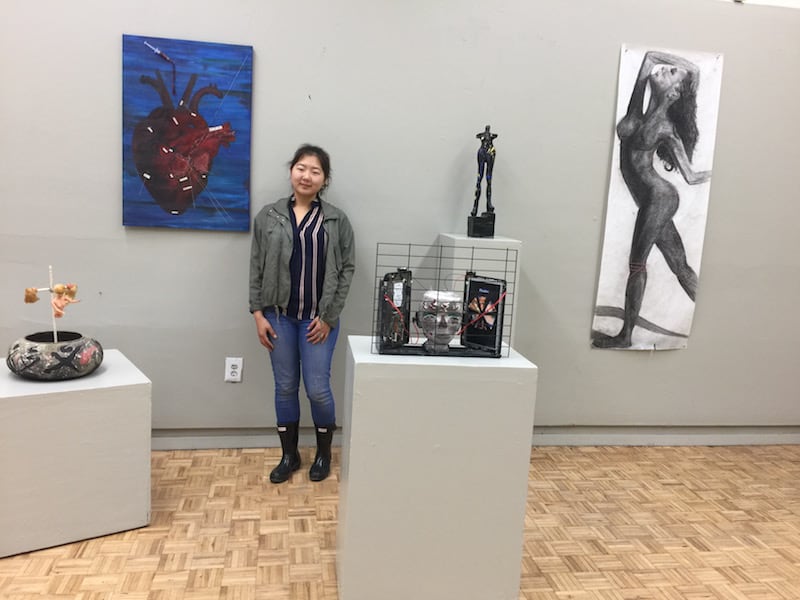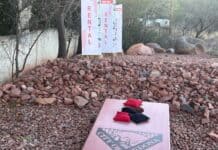
One of the many magical metamorphoses that Verde Valley School inspires takes place in the creatively charged atmosphere of the art studio. Students are given full permission to explore and express, and in that process they find their values and themselves.
In the course of just a few seasons, these young pupils transform from pupae to butterflies, and their art is the outlet to communicate that journey and all the emotions that come along for the ride.
With high school life almost over for the International Baccalaureate art seniors, they are preparing for their grand finale: The IB Art Exhibition, opening Friday, April 7.
Alexia Lino’s collection reflects the constraints and confinements experienced by youth of color in the United States, drawing inspiration from her own life and artists such as Kehinde Wiley, Frida Kahlo and Hannah Höch. These constraints, beyond the proverbial box, manifest from being a minority, a woman, a young student, a family member. Lino uses surrealism and exaggeration to make her point clear, to illustrate the myths of stereotyping and expose the cultural divides. Using oil painting, 3-D and collage, her desire, her message, is to present youth in a new light and reveal what it means to be a 21st century teenager. Ultimately, her message is one of hope, “Because even in the most confined place, flowers can still grow,” she said.
Cindy Ji’s message may not contain so much hope. With so much pressure for perfection on young girls in her home country of South Korea, hope is squeezed out with tweezers, incisions, stitches and plastic surgery. For as long as she can remember, Ji has been surrounded by these pressures to be a certain image, to get surgery to be a pretty girl or beautiful woman. Korean girls undergo plastic surgery at an early age, between 14 and 18, especially double eyelid and nose surgery, most often at the suggestion of family. Cosmetic surgery is as common as a regular doctor’s office visit she said. Ji’s portfolio is a diverse mix of charcoal, fibre clay, raku and collage, and asks the question: Why is it women feel pressured to look a certain way and how do we really feel about that? While Ji turns to her art to try and figure out answers, she says she’s making a statement more than a judgment and building awareness to invite reflection.
Teresa Zhang says she found a personal connection to the spirit in primitive Chinese culture and the Bronze Age in particular. The familiar tripods from this period represented authority — they were often gifts exchanged by royalty and nobility, passed down through generations. Zhang’s intricately patterned tripods, sculpted, carved and glazed to reflect the features of these ancient pieces, certainly command respect and reflection. Her delicate little ceramic teapots symbolize the diversity and prosperity of Chinese tea culture that has endured through the millennia. Bold paintings of the mythical phoenix and dragon tell the story of the animistic relationship between humans and their environment, and explain a culture that defines itself as descendants of the dragon. The magnitude of what Zhang chose to relate and exhibit must have been a challenge. Fortunately, she has many gifts, including ceramics, painting, printing, carving, sculpture and mixed media, and she’s creatively woven this cornucopia into a successful story of primitive Chinese culture, with a contemporary twist.
Come and meet these inspiring young artists and all the senior IB art students, at the opening of their IB Art Exhibition on Friday, April 7, between 6:30 and 8 p.m. in the Avery Gallery, located inside Brady Hall on the Verde Valley School campus.


















